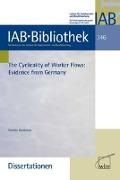Read more
The development of unemployment and employment is strongly determined by labor market flows. Daniela Nordmeier uses process-generated micro data provided by the Institute for Employment Research (IAB) to analyze the cyclical behavior of worker flows in Germany. She examines central aspects of this topic in three self-contained studies:
* The time aggregation bias in worker flows
* Unemployment dynamics conditional on structural shocks
* The modeling of job findings by a matching function.
List of contents
List of Figures
List of Tables
Preface
1 Introduction
1.1 Background
1.2 Overview of the Essays
2 Worker Flows in Germany: Inspecting the Time Aggregation Bias
2.1 Introduction
2.2 Data Description
2.3 Time Aggregation Bias
2.4 Stylized Facts of German Worker Flows
2.5 Conclusion
2.A Data Selection
2.B A Nonemployment Proxy according to
2.C Figures of the Time Aggregation Bias
2.D Robustness Checks
3 Patterns of Unemployment Dynamics in Germany
3.1 Introduction
3.2 Data Description
3.3 Empirical Model
3.4 Results
3.5 Robustness Analysis
3.6 Subsample Analysis
3.7 Conclusion
3.A Further Tables and Figures
3.B Imposing Identifying Restrictions
4 The Matching Function: A Selection-Based Interpretation
4.1 Introduction
4.2 Estimations from Empirical Data
4.3 A Simple Selection Model
4.4 Estimations from Simulated Data
4.5 Fictional Matching Function Analytics
4.6 Conclusion
4.A Previous Matching Function Studies
4.B Reporting Rate of Vacancies
4.C Robustness Checks of the CRS Assumption
4.D Control Variables
4.E Endogenous Separations
4.F Contact Rate
5 Conclusion
References
Abstract
Kurzfassung
About the author
Daniela Nordmeier ist seit 2009 wissenschaftliche Mitarbeiterin am Institut für Arbeitsmarkt- und Berufsforschung (IAB) in Nürnberg.

